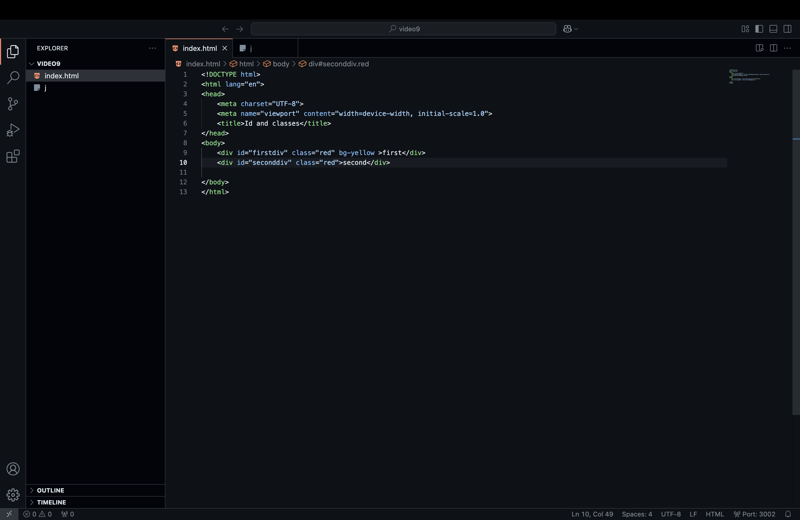HTML is the backbone of every website, and today, I explored some fundamental concepts that make web development more structured and interactive. From IDs and classes to embedding multimedia and structuring content effectively, here's a summary of my learning journey.
Understanding ID and Classes in HTML 📊
One of the most important aspects of HTML is organizing elements efficiently. IDs and classes help us achieve this:
ID: A unique identifier for an element, often used for styling or creating anchor links for quick navigation.
Class: A reusable attribute that can be applied to multiple elements for styling consistency.
Using IDs, we can create direct links within a webpage
This makes it easy to jump to specific sections within a page.
Embedding Audio and Video in Webpages
Multimedia content enhances user experience. HTML provides the <audio> and <video> tags to embed sound and video files. Some essential attributes include
autoplay: Plays the media automatically.
loop: Repeats the media once it ends.
controls: Displays playback controls.
Introduction to SVG Images
Scalable Vector Graphics (SVG) allow us to render high-quality images that remain crisp at any resolution. Unlike traditional image formats (JPEG, PNG), SVG files are defined using XML-based markup, making them ideal for icons and logos.
Using iFrame to Embed External Content
The tag lets us embed other websites, videos, or maps inside a webpage. This feature is useful for displaying external content without redirecting users away.
Example:
The Power of Semantic HTML
Semantic elements improve the structure, readability, and SEO of a webpage. Some commonly used semantic tags include:
<header>: Represents the introductory section.
<section>: Groups related content.
<article>: Defines self-contained content.
<footer>: Represents the bottom section of a page.
Using semantic tags makes websites more accessible and easier to maintain.
Working with HTML Entities
HTML entities allow us to display special characters that might otherwise be interpreted as code. Common entities include:
< for <
> for >
© for ©
These ensure that the correct symbols appear on the webpage without breaking the HTML structure.
Quotation and Code Formatting Tags
HTML provides several tags to display quoted text and code snippets effectively:
<blockquote>: For block quotes.
<q>: For inline quotations.
<code>: For displaying code.
<pre>: For preserving formatting in code blocks.
<kbd>: For representing keyboard input.
These tags enhance readability, especially in technical documentation and blogs
Conclusion 🎯
Today’s learning covered essential HTML concepts that are crucial for web development. From structuring content with IDs and classes to embedding multimedia and using semantic tags, each of these topics contributes to a well-organized, accessible, and visually appealing website.
Excited to continue my journey and explore more web development concepts!










Top comments (0)